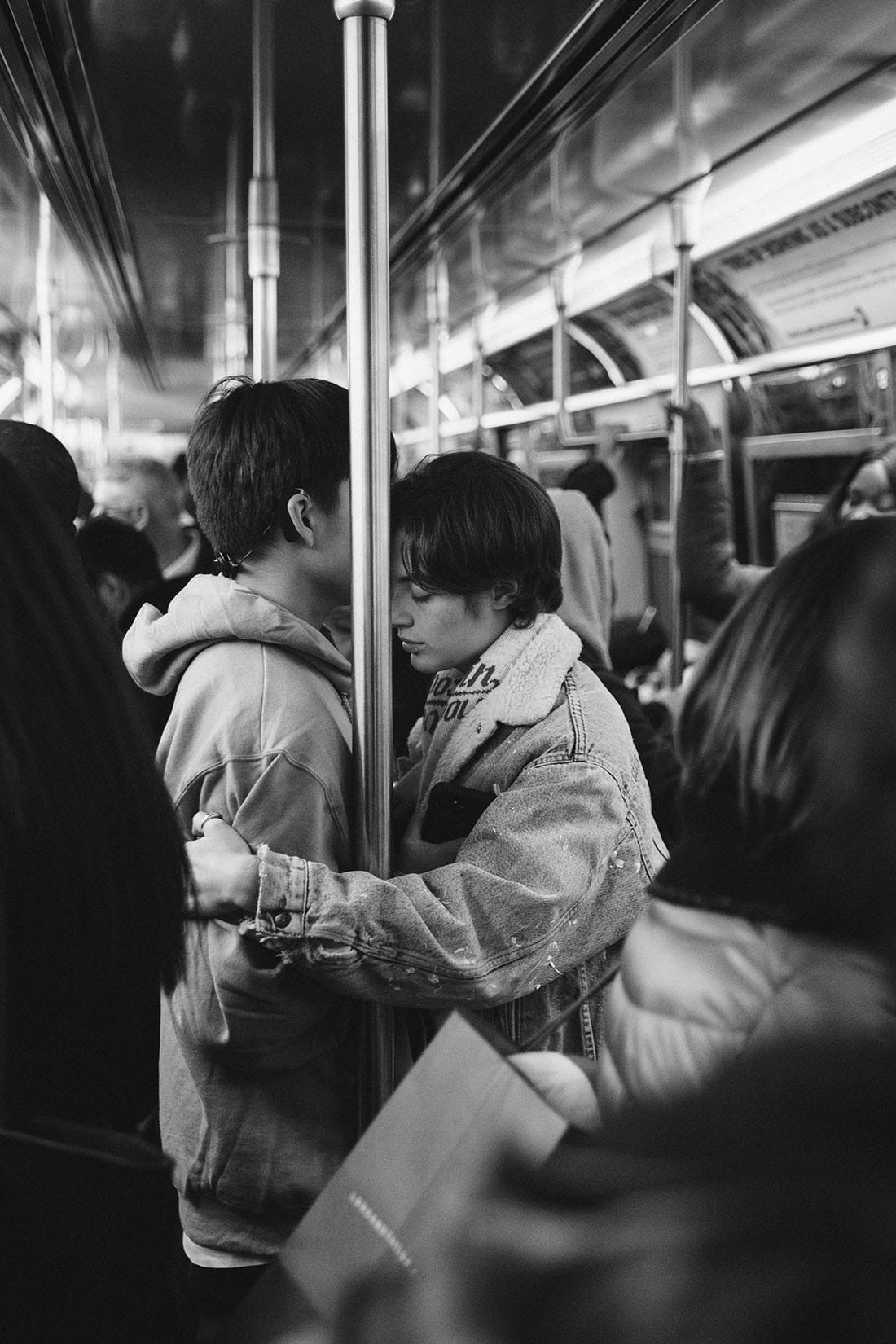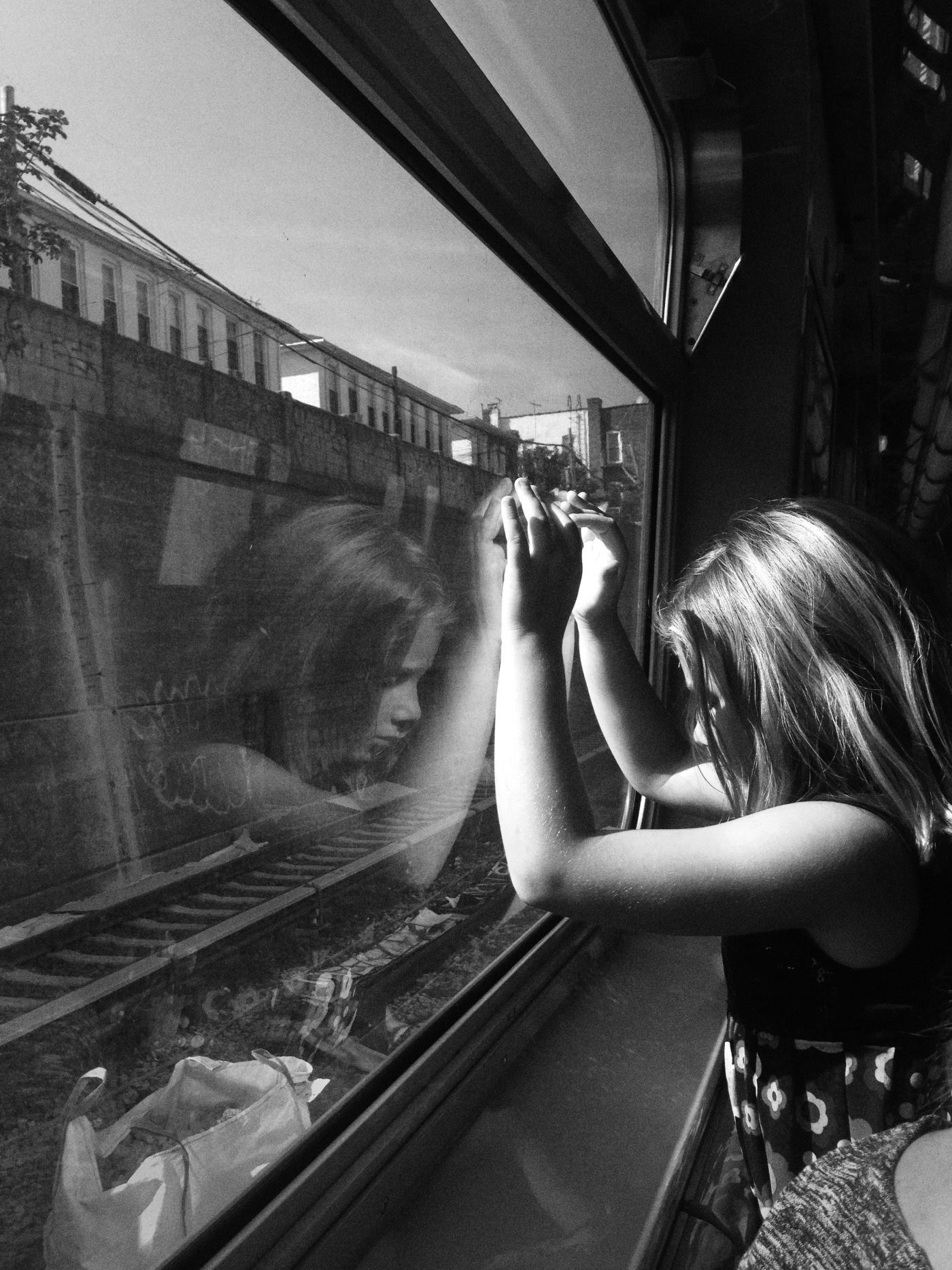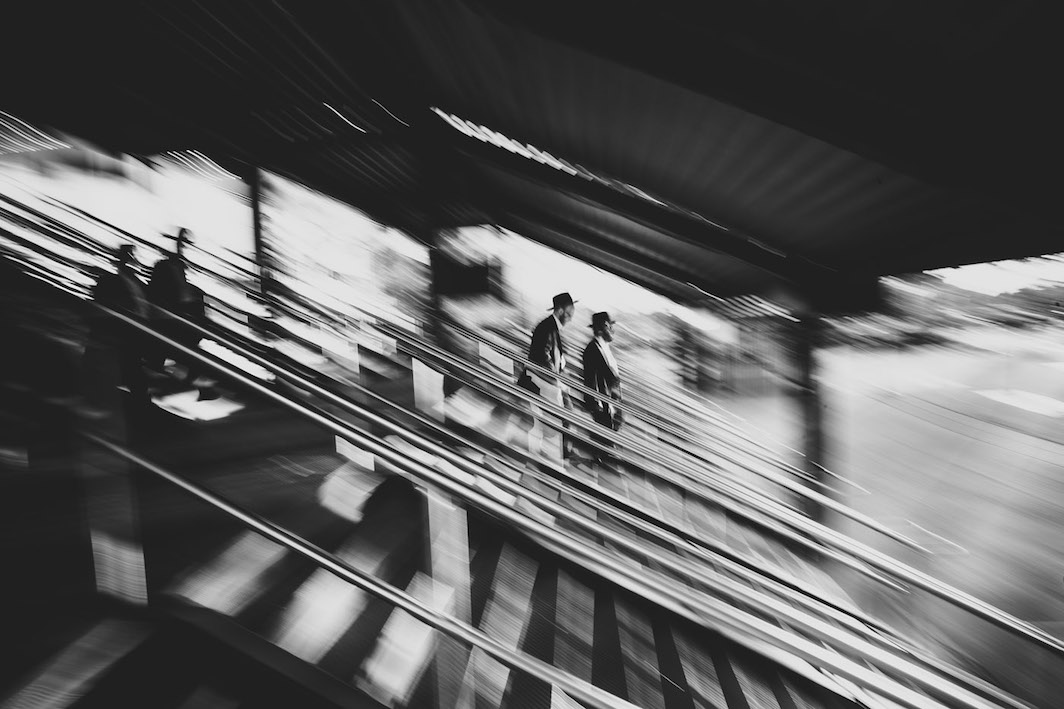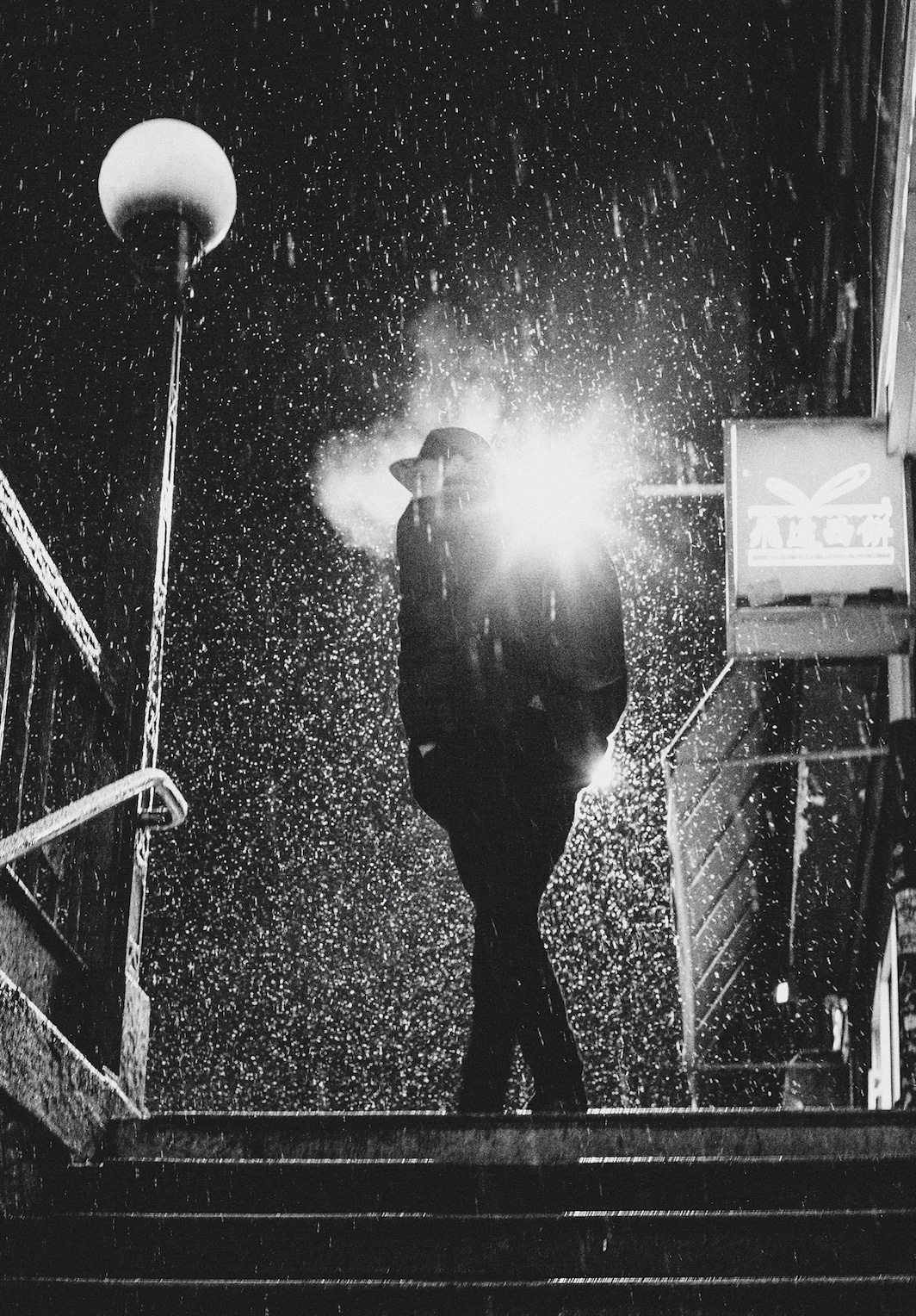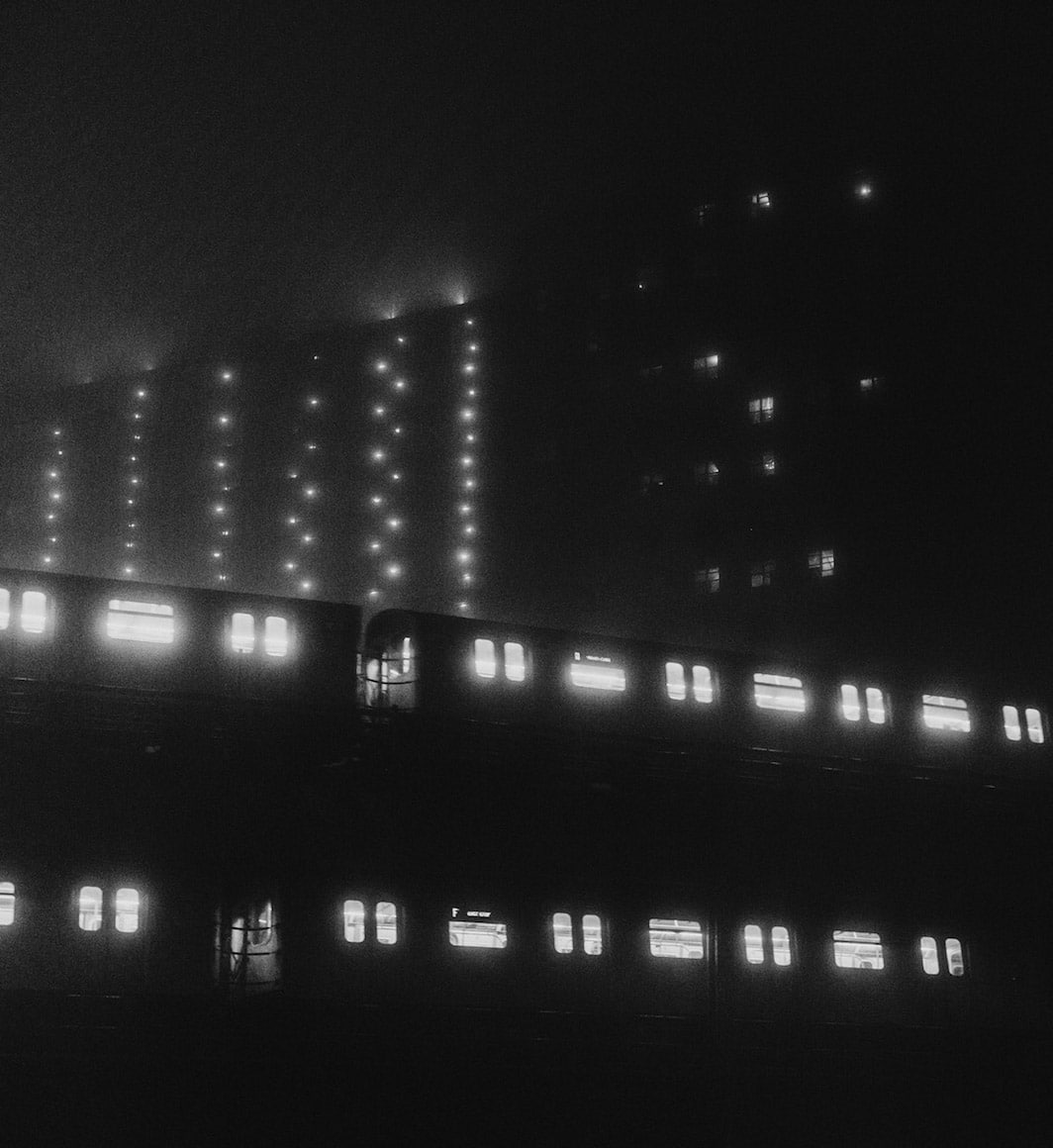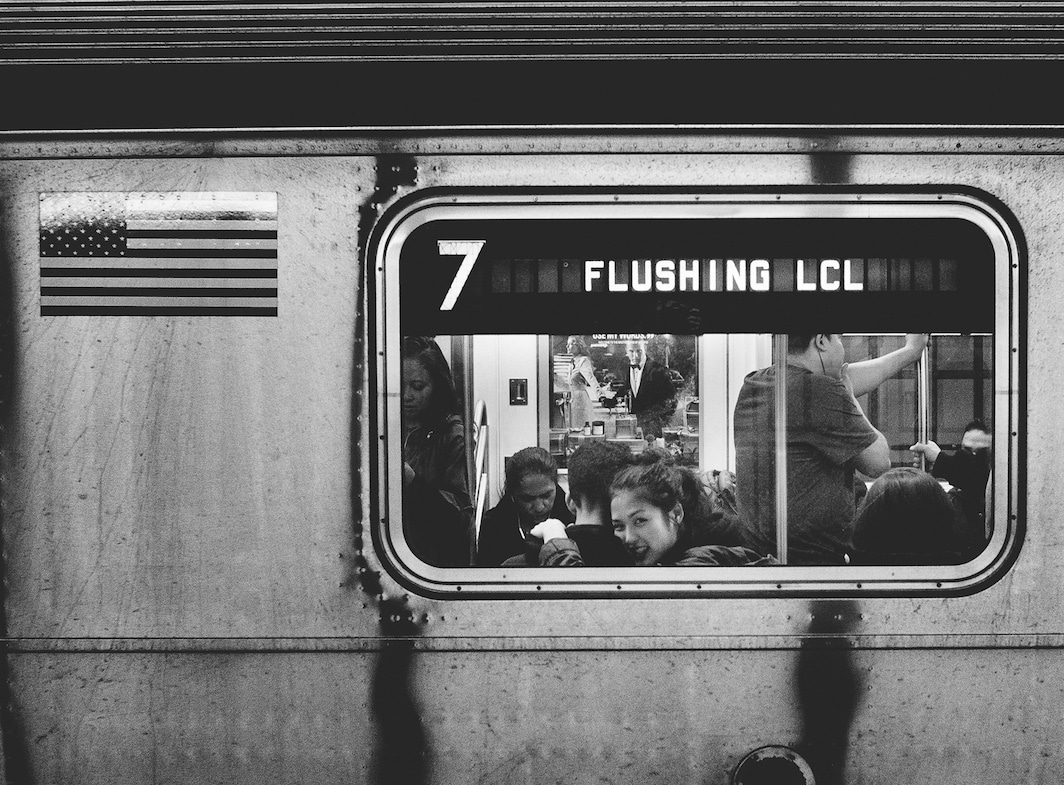
New York-based photographer Luc Kordas first moved to the Big Apple in 2014 after living in six different cities throughout Europe. Since then, he’s never looked back and spends his time wondering the five boroughs, capturing the city’s unique energy and characters with his ongoing street photography series, New York Chronicles.
Rendered in his distinct hazy, black and white style, Kordas is inspired by the timeless photography of the 19th century. Kordas describes New York as “an ideal playground” for street photographers. One of his main locations is the New York City Subway where, for the past four years, he’s been shooting commuters from all walks of life.
Kordas describes the metro system as “almost like a city within a city, like a mini New York condensed underground.” From waiting by the tracks at rush hour to getting up close to a lovers’ embrace, the fascinating series captures the honest and intimate beauty of each of his subjects. “I mostly shoot with my heart, not my eyes,” Kordas admits. His captured scenes evoke intimate narratives of the lives of each New Yorker, who lives within the chaos of the bustling, 8 million strong metropolis.
Read on for our exclusive interview with Kordas, where we discuss life in New York, his style, influences, and plans for the future.
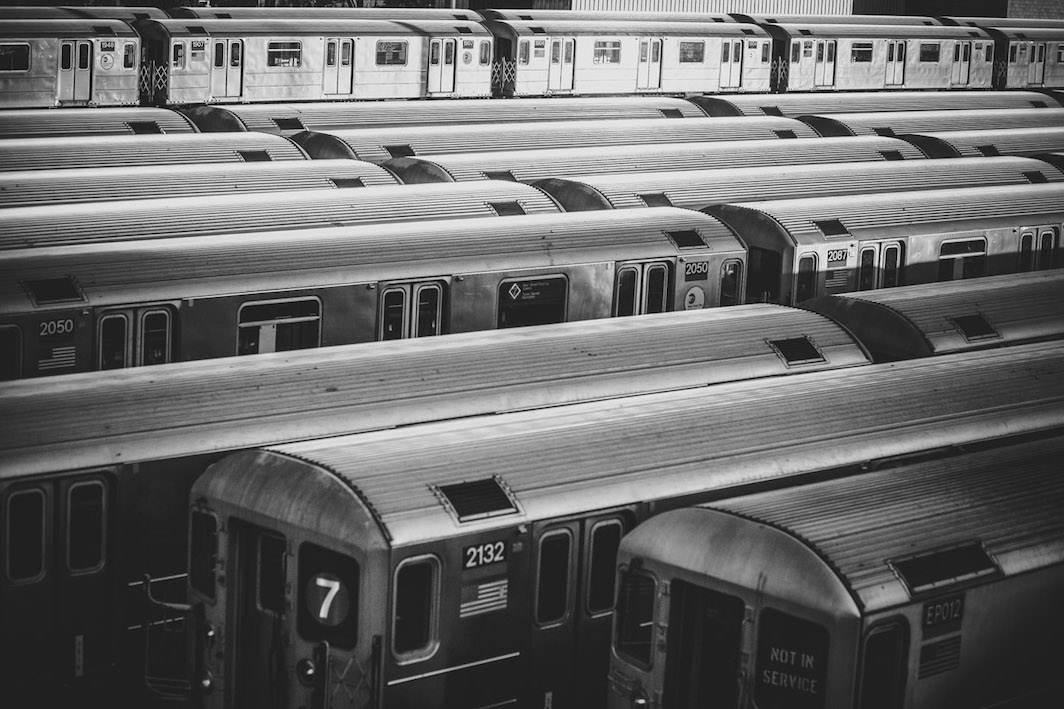 What inspired you to pursue photography? And in particular, street photography?
What inspired you to pursue photography? And in particular, street photography?
I started taking pictures at the age of 20 and it quickly grew on me, but it wasn’t until 10 years later that I managed to turn it into a way of making a living. For a long time it was just one of the things I did. Street photography kicked in really exactly six years ago when I came to live in New York for 3 months, fell in love with the city, and discovered street. I barely shoot street outside of NYC. I lived in London, Paris, Madrid, Edinburgh, Toulouse, and Barcelona, all those big cities, but it’s only here that I feel like doing it.
What brought you to New York?
I came here first in the summer of 2008. Back then, New York didn’t make as big of an impression on me as it did the second time around in 2012. My first encounter with the beast was just a mere week. Me and a friend who hosted me walked around the city and took photos. At the time, I didn’t know this was called street photography. I was just a tourist with a camera, but I somehow managed to take enough photos to make a small body of work of black and white New York shots.
I pitched the material as an exhibition to a gallery in my hometown (Wrocław, Poland) and they accepted it. It was simply called New York and it was my first and last solo exhibition to date actually. Maybe a prophecy of a sort, in terms of where I would end up. Then I came again in 2012 and during 3 months shot thousands of street photos walking the 5 boroughs, hours on end. That’s how New York Chronicles started and that’s the first time I was told what I was doing was called street photography. I fell in love with the city and the idea of being a photographer here, laid out a plan that took 2.5 years to realize and came back for good in the fall of 2014. I’ve been living here ever since.
 What do you think makes the city so special?
What do you think makes the city so special?
There’s a unique energy this place has. That energy comes from the people of course. There’s something alluring in the air, something that literally smells like opportunity. It’s a façade, but a convincing one. If you’re an ambitious person, once you come here and hear that siren song, you’re hooked. I love how diverse and cosmopolitan New York is.
Sometimes I think that the reason I’m still here and not back on the road traveling is that I feel like I’m traveling the world all the time without leaving the city. In a day I can talk to a Bengali taxi driver, Mexican lady selling tortillas on a street corner, a bunch of Cuban musicians playing on subway, see what the yuppies are doing on Wall Street and grab a lunch in a Polish restaurant. I can then go hang out in Korea Town or go to the beach in Coney Island…the list goes on and on. For a street photographer this truly is an ideal playground.
If photography has a capital, that’s surely New York. And the subway itself is almost like a city within a city, it is like a mini New York condensed underground, a true meeting point of people from all walks of life. It’s fascinating on so many levels.
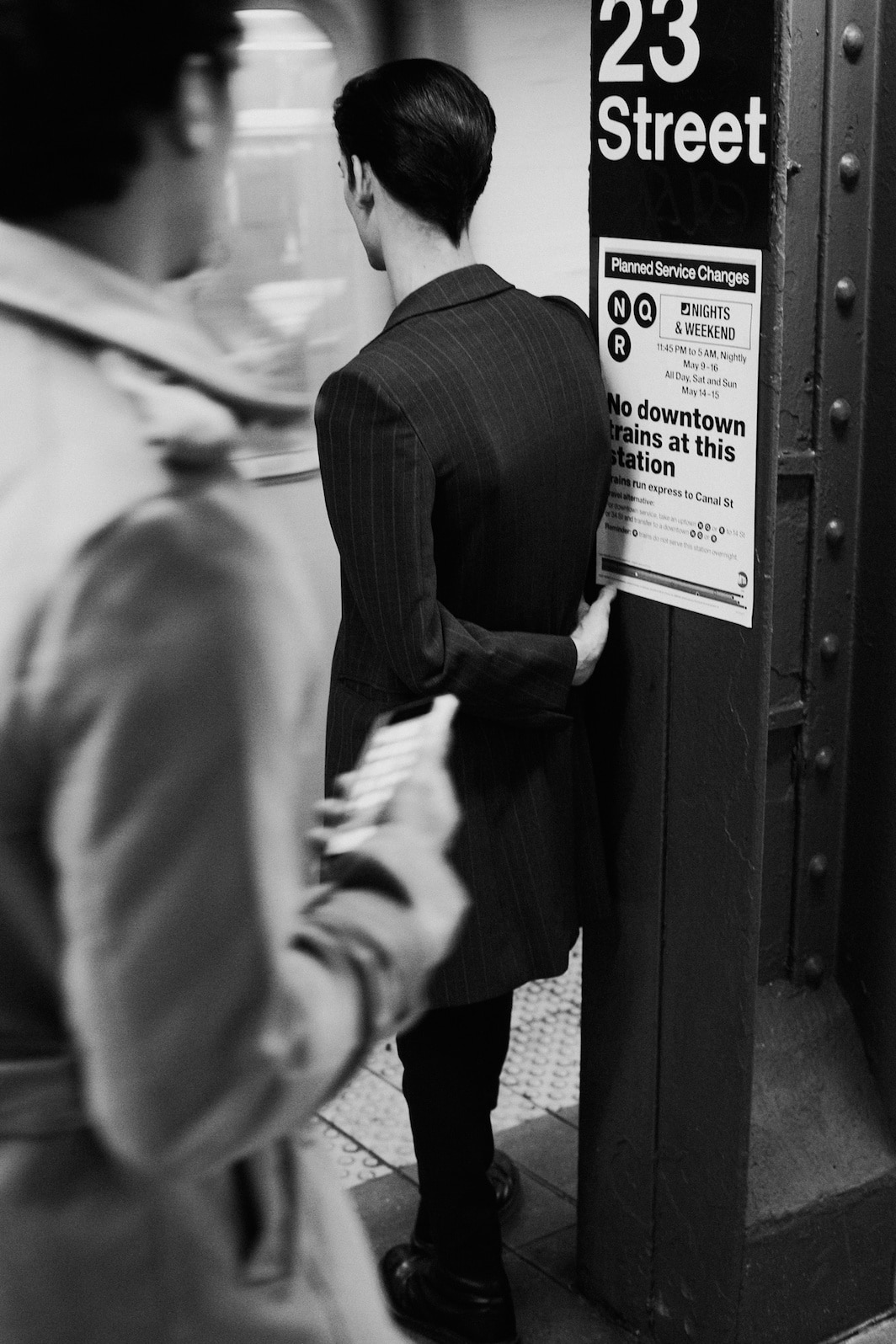 Over the last 4 years you must have come across a diverse range of people on the subway. Are there any particular characteristics that draw you to your subjects?
Over the last 4 years you must have come across a diverse range of people on the subway. Are there any particular characteristics that draw you to your subjects?
I did notice I’m drawn to certain themes more than others. I like shooting people who look lonely, couples, children, people deep in their thoughts, and, you know, characters, people who don’t look ordinary, the odd ones out. I avoid people on their phones or wearing characteristically white Apple headphones. I don’t usually shoot people who pose for pictures and I’m not particularly drawn to tourists. Shooting in the subway is a challenge. Many photographers have a problem with it, it takes even more guts than to shoot on the street.
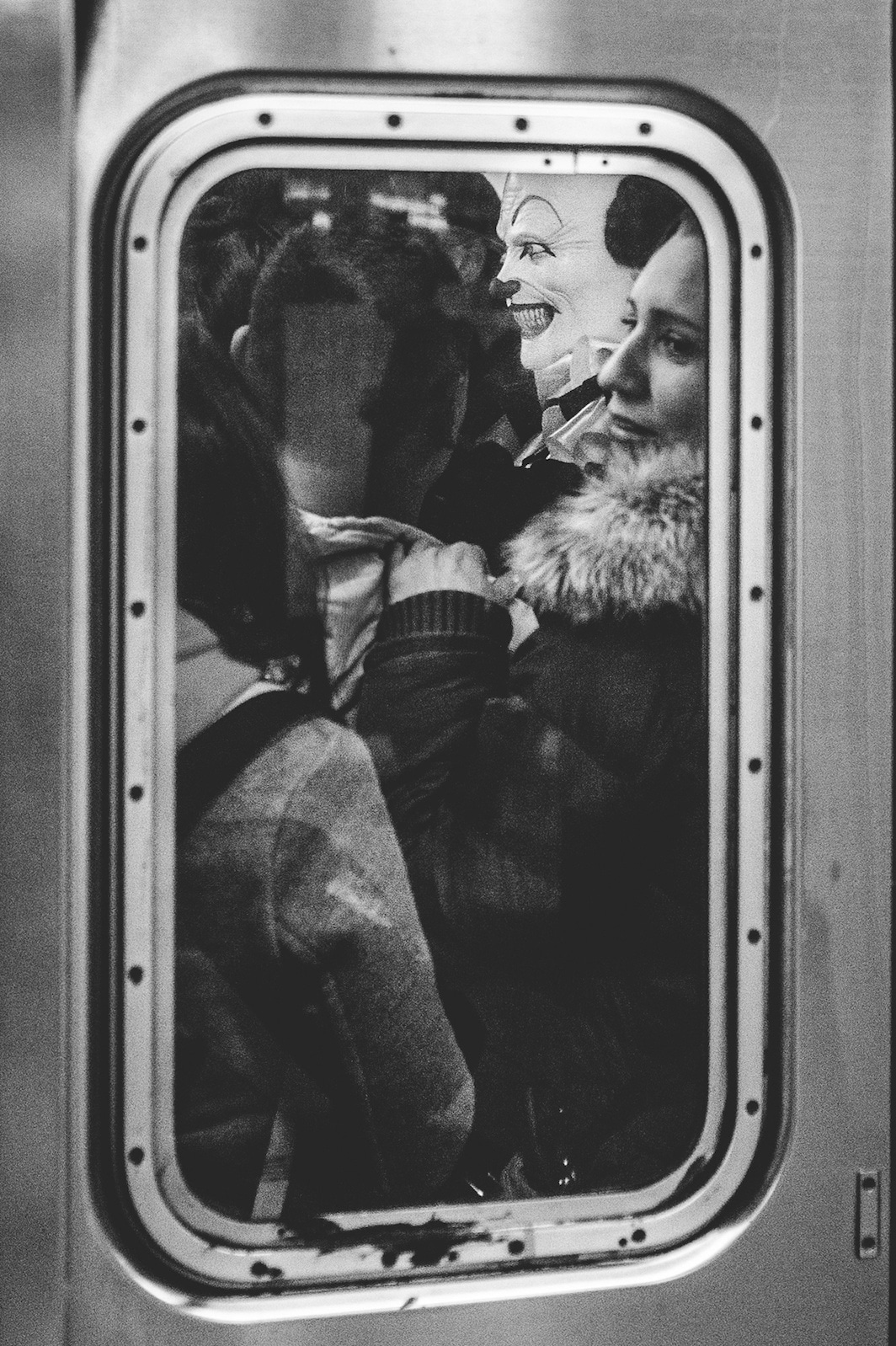
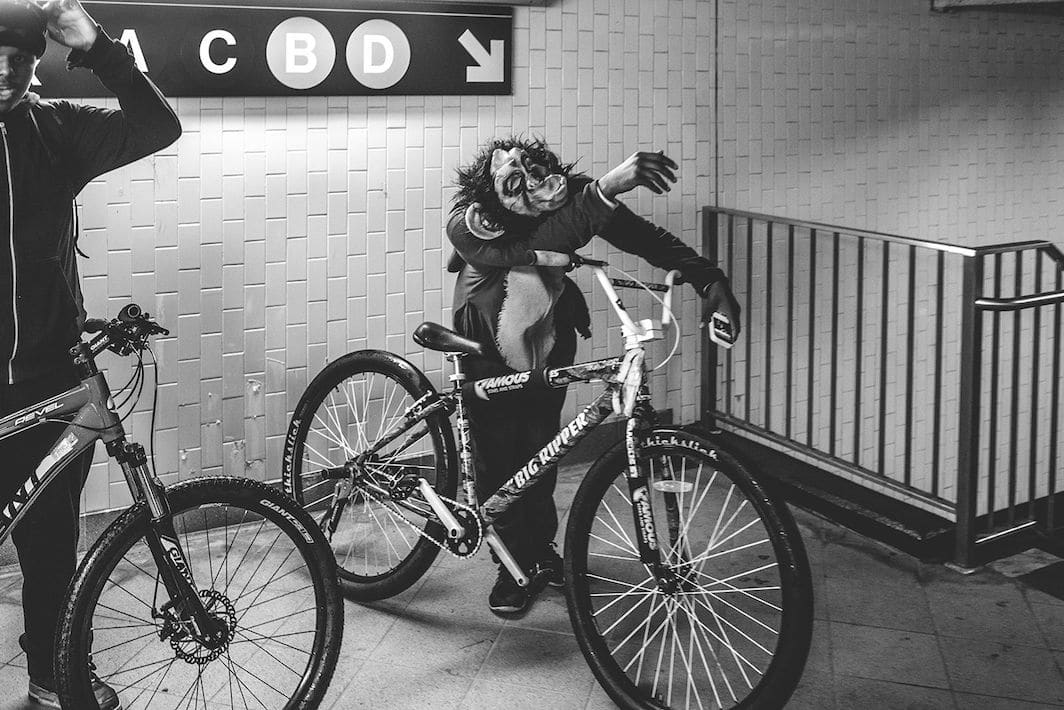 Do you have a preference when it comes to shooting analogue or digital?
Do you have a preference when it comes to shooting analogue or digital?
I moved very quickly from analog to digital and never looked back. I know how to make my photos have that analog look (in fact, many people think New York Chronicles is shot on film), but with my lifestyle of a vagabond living on the road, bothering with organizing an actual darkroom and spending money on film isn’t something I want to do. Digital is conveniently easy and fast. And of course it’s a must if you are a pro.
What, to you, is the significance of shooting exclusively in black and white?
I’ve always been in love with the classics. Henri Cartier-Bresson, Doisneau, Ronis, Evans, Stieglitz, Atget and many others from the first half of XX century have always been my go-to inspiration. I think b&w is elegant and timeless – there’s a sense of otherworldliness to it. I think black and white suits New York.

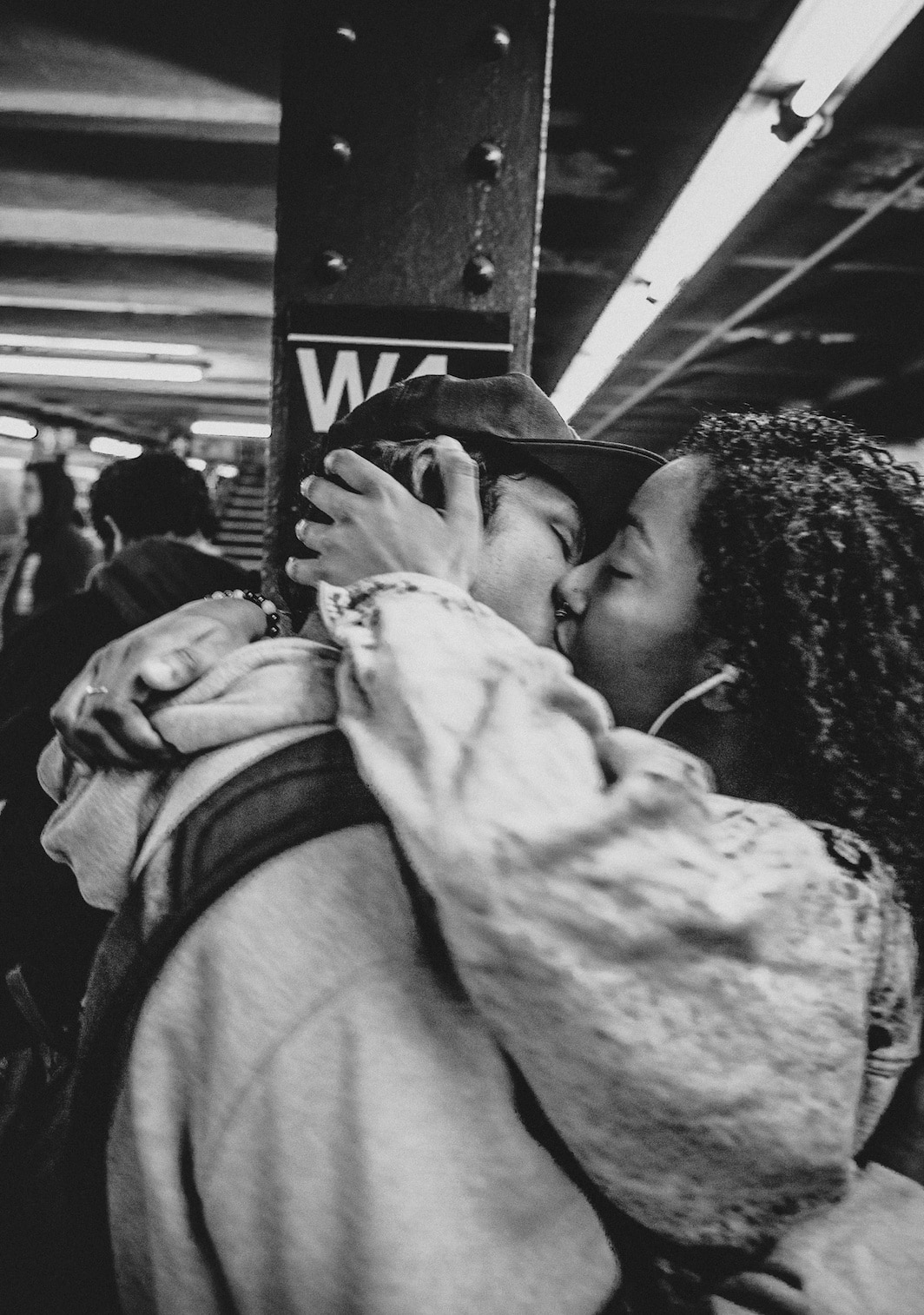 What kind of impression or feeling do you hope to leave upon others who see your photographs?
What kind of impression or feeling do you hope to leave upon others who see your photographs?
I don’t have an agenda as a street photographer and rarely see what I’m doing as documenting (but in fact I am regardless). I’m usually not interested in that. I simply take photos of whatever catches my eye, but with a fine art vision, not a photojournalistic one. I like my single photos to be complete poems or short stories. That being said, it’s fun to shoot series as well; I’ve been recently combing through my archives to make sets of images focused around certain themes. The Subway series is a good example of that.
I hope people feel that my photos are honest. I mostly shoot with my heart, not my eyes. I have a point of view that is uniquely mine. I’d like to think that by now when people see a New York Chronicle they know what it is before they check the photo credit. I hope my street work would make you want to come and live here for a while, but I also hope that, despite the project’s very specific name, it’s actually bigger than the city, that there’s something universal in them, something you can relate to because you’re a human being but not necessarily a New Yorker.
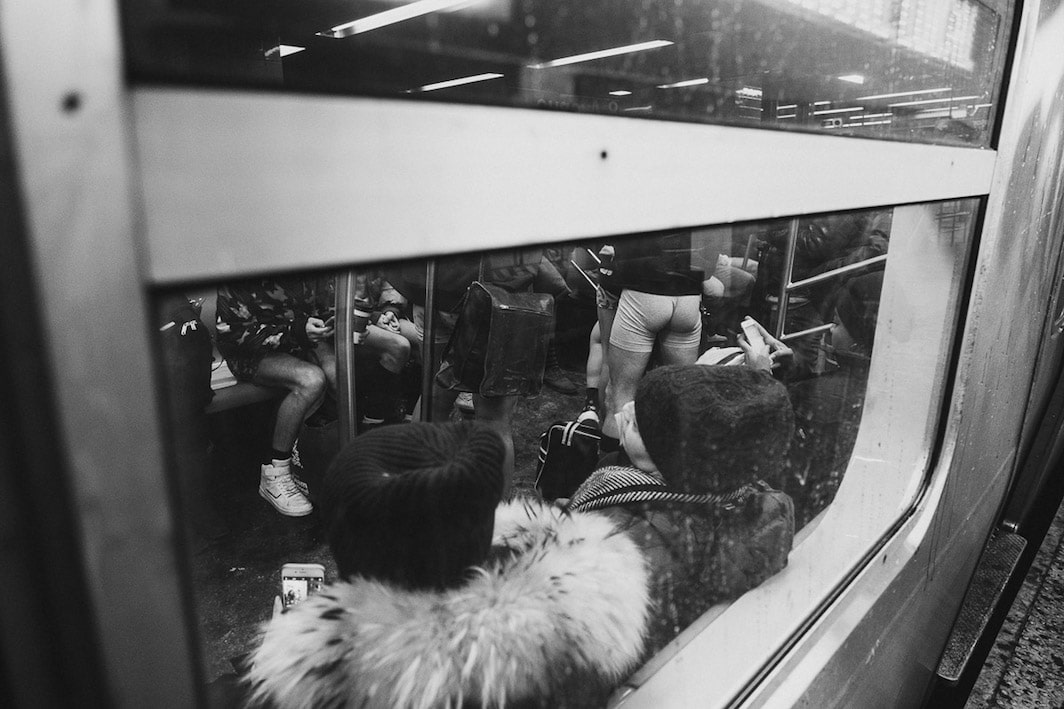 Do you have any upcoming projects you’d like to share?
Do you have any upcoming projects you’d like to share?
I think I might be organizing a street photo workshop this summer in New York. It’ll be a first. Stay tuned! I’m also looking for a publishing house that would be interested in publishing New York Chronicles as a book. Just saying.
